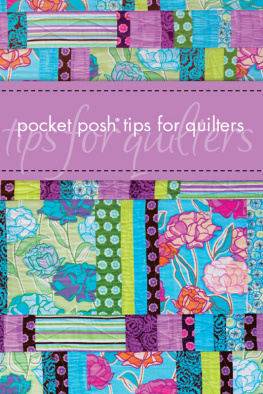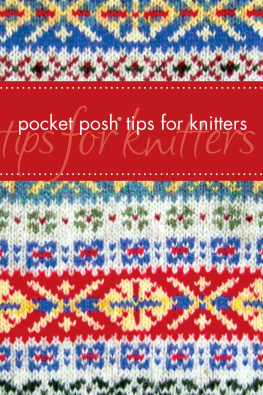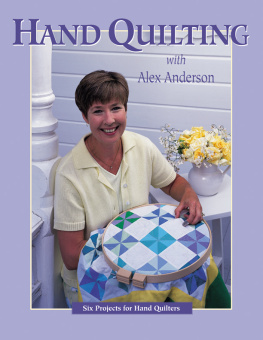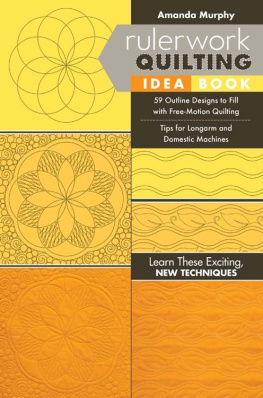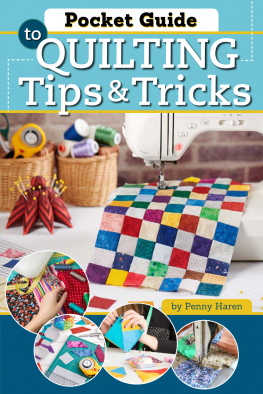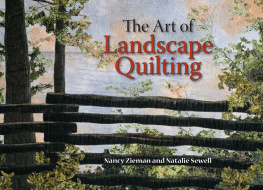
POCKET POSH TIPS FOR QUILTERS
copyright 2011 by Jodie Davis and Jayne Davis. All rights
reserved. No part of this book may be used or
reproduced in any manner whatsoever without written permission
except in the case of reprints in the context of reviews.
Andrews McMeel Publishing, LLC
an Andrews McMeel Universal company
1130 Walnut Street, Kansas City, Missouri 64106
E-ISBN: 978-1-4494-0861-9
Library of Congress Control Number: 2010937877
www.andrewsmcmeel.com
Hand drawings by Iia Owens-Williams
Quilt and Fabric design by Erin McMorris
ATTENTION: SCHOOLS AND BUSINESSES
Andrews McMeel books are available at quantity discounts with
bulk purchase for educational, business, or sales promotional use.
For information, please e-mail the Andrews McMeel Publishing
Special Sales Department:

contents

acknowledgments
When we started mulling about how to round up a collection of tips for quilters, we decided to go right to the source. Thus many, many e-mails went out to quilt shop owners, designers, and industry leaders asking for their favorite tips. A huge Thank You to each and every one who responded. We couldnt have done it without you. Special thanks go to the members of the Gold Coast Quilters Guild of Boca Raton, Florida, for sharing their quilting tip collection. Weve also added tips gleaned from our two lifetimes of quilting.

introduction
Wikipedia tells us that quilting is the stitching together of layers of padding and fabric and that it may date back to ancient Egypt. In the past quilting was a product of necessity to patch clothing and make it warmer, and to make quilts to warm beds.
Today we quilt for the sheer joy of it and as an outlet for our creativity. Our quilting ranges from the very traditional to the most avant-garde. Anything goes, and the colors sing, whether muted or brilliant. Many quilters embrace the latest technology, while others savor quilting by hand and others enjoy the full gamut.
Were thankful to be part of this passionate and diverse worldwide community of quilters and know you are thankful, too. We hope you enjoy this collection and discover some tips that will give you an aha moment, making your quilting faster or easier and always more fun.
Jodie and Jayne


lets get organized
May your bobbins always be full.
Anonymous
With everyone having a cell phone nowadays, I keep a list of all my books and patterns in my phone so if I am out and about I can check my phone to see whether I have already purchased it. I have been known to have three or more copies of the same pattern. Thank goodness for cell phones; you can also store a list of fabrics you are searching for.
Material Girls Quilts
thematerialgirlsquilting.com
When you have a whole day or half a day to quilt, spend it designing and cutting. Organize the pieces on your design wall, in plastic bags or containers, or on paper plates that you can stack. Discipline yourself to keep designing and cutting all day. Dont sew! Then, later in the week when you only have minutes to sew, you are ready! A side benefit of spending the day designing is that you may find there is something that is just not working when you view the pieces on your design wall. It is much easier to make changes before they are sewn.
Debbie Caffrey
Debbiescreativemoments.com
Hold everything in place: Cut a piece of Rubbermaid drawer liner into a small rectangle or square. Place the liner piece beside your sewing machine to keep scissors, stiletto, and other tools handy. They wont roll off the table when you sew. These pieces of drawer liner can hold foot pedals steady on tile or wooden floors. You can put a large piece under your sewing machine so it doesnt move or under a portable ironing surface to prevent the board from sliding while in use.
Gold Coast Quilters Guild
Keeping your thimble in place: Lick your finger before putting on your thimble. This will stop it from slipping.
Gold Coast Quilters Guild
Organizing rotary cutting rulers: Where do you put rulers so they are accessible but out of the way? Each ruler has a small hole, but its too small to put on a hook. Thread flat ribbon through the hole and make a loop, then hang the ruler from a set of hooks. Its neat against the wall, not taking up any table space, its easy to find, and the flat ribbon doesnt interfere with the rulers sitting flat on the fabric.
Gold Coast Quilters Guild
Store your quilts in pillowcases or fabric bags, which allow them to breathe. Never store quilts in plastic bags.
Labeling your ruler: Use address labels on all your plastic rulers so you dont lose them.
Gold Coast Quilters Guild
I use the little sticky hangers that are removable. I stick them on a storage door at the shop so that we always have different size rulers without anyone walking away with our own personal rulers. I also use them in my sewing room. I keep all my rulers on the back of my door, and then I always know where they are. We have an abundance of sticky hangers. Love them!
Material Girls Quilts
thematerialgirlsquilting.com
Containers for small projects: In grocery stores, some vegetables are sold in small Styrofoam containers. These containers are good for storing small projects like the block of the month and for keeping larger scraps together from projects you are working on. You can also stick pins in them as you are working. They stack nicely and come in lots of sizes.
Gold Coast Quilters Guild
Styrofoam containers: Stack one or two Styrofoam trays beside your sewing machine to hold scissors, bobbins, and so on. Line everything up in the tray or on the bed of the machine the same way every time and you can reach, without looking, for just the right tool. You can stand your stiletto and seam ripper upright through the side of the foam tray. No more poked fingers, and they are always handy.
Gold Coast Quilters Guild
If your quilts are stored folded, take them out and refold from time to time. Be sure to change the folding pattern.
Storing accessories for appliqu and hand piecing:

